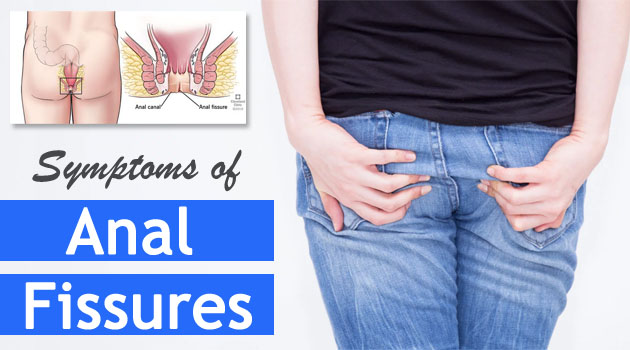What is most imperative for a person suffering from an anal fissure is to bring his problem to his physician’s notice as soon as possible because a delay in doing so can make the condition even worse. Most people are embarrassed to discuss anal fissures even if they doubt that they DO indeed have fissures.
You are probably reading along because you too doubt that you might be having an anal fissure. So, read on to know about the main symptoms of anal fissures:
Symptoms of Anal Fissures:
Listed below are the main symptoms of anal fissures which might help you in a little self diagnosis. Doing so will help you know if you need to see the doctor.
Pain in the anus: 85% of the people suffering from anal fissures complain of a severe, shooting pain in the anus. In some cases, the pain is severe enough to bring tears to the eyes of the affected person. While some people complain of a pain only at the time of passing out stool, many people experience a pain before the urge to pass out stool or after having relieved oneself.
You May Also Like:
10 Symptoms Of Urinary Tract Infection Genital Warts Home Remedies Home Remedies For Bladder InfectionPainless fissures: Pain, however, is not always present. Many people get painless fissures. However, as a matter of rule, painless fissures are always accompanied by blood.
So, if you experience a pain in the anus at the time of, before or after passing stool and have seen blood on the stool, you need to first examine the stool carefully to see if the blood is mixed with the stool or separate from it.
Blood on the toilet paper: Blood mixed with stool is NOT indicative of anal fissures. If it is indeed seen, it might be indicative of problems which could be deadlier than anal fissures and must be brought to a physician’s notice immediately.
If blood is found to be separate from the stool (as noticed by you on the toilet paper, the seat of your toilet or, in extreme cases, on your under clothing), check carefully to see the color of the blood. In case of anal fissures, the blood is invariably BRIGHT RED in color, and not DARK RED.
Difficulty in walking and/or sitting: If you are unable to walk properly for a long time even after having passed the stool or are unable to sit properly as well, you should not delay visiting the doctor.
Discharge: If you see a yellowish discharge from the anus, it might again be indicative of the presence of anal fissures.
Itch: If you often get a terrible itch around the anal region which is accompanied by a few of the symptoms listed above, visit your doctor at the earliest.
If these symptoms of anal fissures are ignored either due to negligence or due to embarrassment in bringing up the matter with a doctor, a “sentinel pile” might develop around the anus.
A sentinel pile looks very much like hemorrhoids, and is often mistaken for the same.
Hemorrhoid Symptoms: Loss of blood from the anus might have been caused either by anal fissures or due to hemorrhoids.
Prolapsed internal hemorrhoids or external hemorrhoids can be, as opposed to anal fissures, felt around the anus if that area is probed with a finger.
Hemorrhoid symptoms are very similar to anal fissure symptoms due to which the two are often mistaken. They may, in fact, have been caused by very similar reasons as well. Further, the tests which confirm the presence of either of the two conditions are very similar.
Having talked about the symptoms of anal fissures, we shall talk about home remedies for anal fissures soon.


Comments